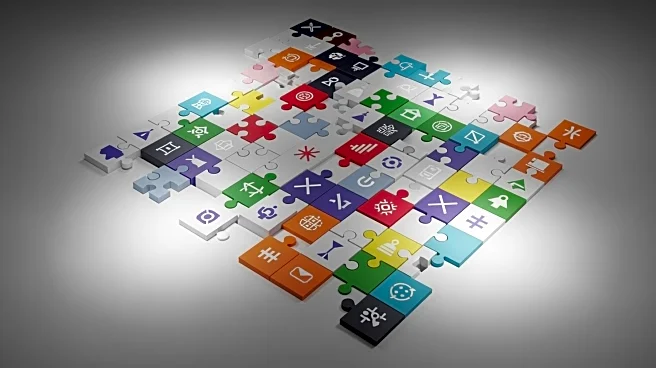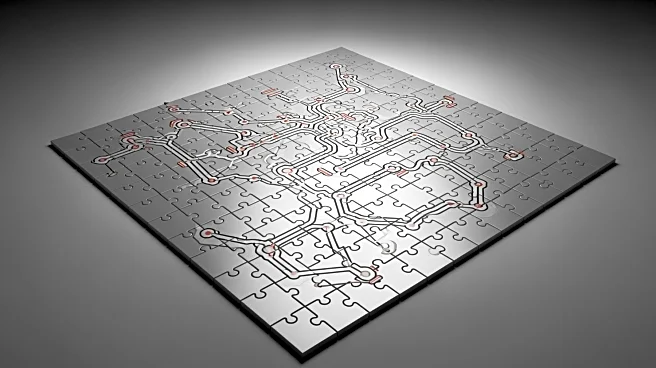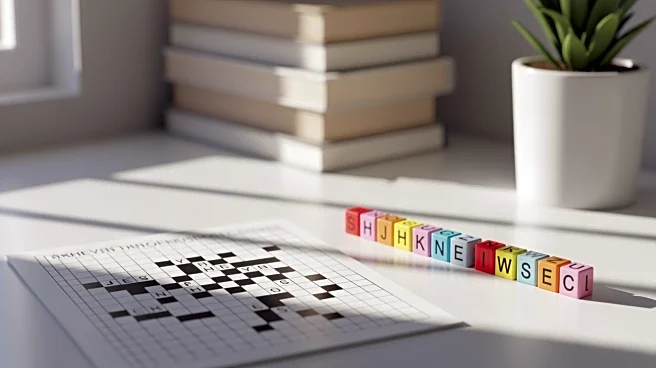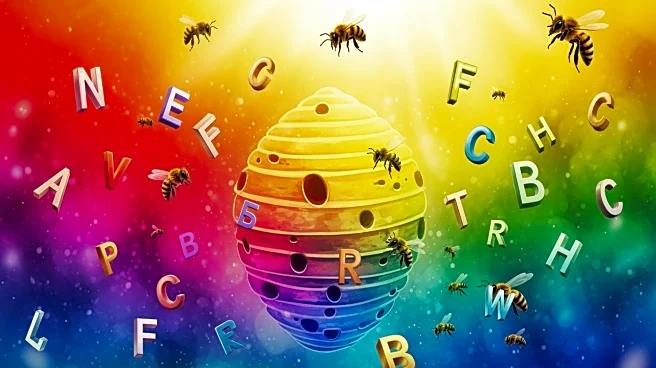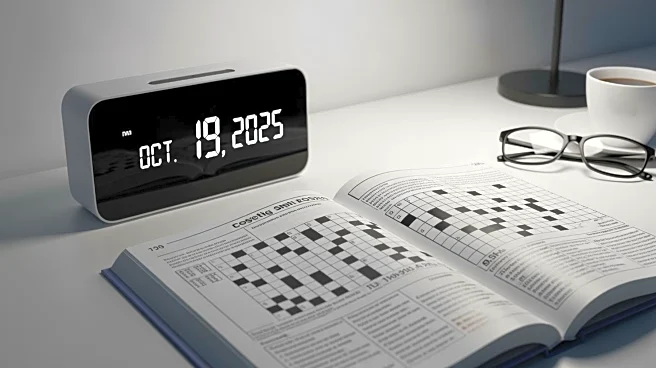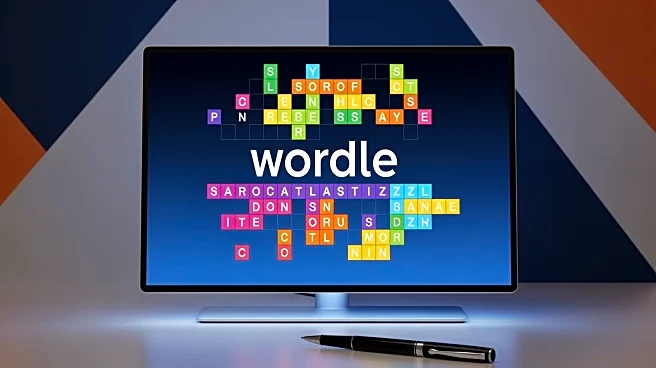What's Happening?
The New York Times has introduced a new puzzle called 'Connections,' which features a variety of themes and challenges for players. The puzzle for October 19, 2025, includes themes such as 'topple,' 'part
of a book,' 'lose it, with "out,"' and 'chocolate bars plus a letter.' Each theme requires players to identify words that fit the category, such as 'fall,' 'spill,' 'tumble,' and 'wipeout' for the 'topple' theme. The puzzle is part of the Times' Games section, which also includes popular games like Wordle and the Mini Crossword. Players can track their progress, win rates, and streaks through a new Connections Bot, enhancing the interactive experience.
Why It's Important?
The introduction of the Connections puzzle by The New York Times represents a strategic expansion of its digital offerings, aiming to engage a broader audience with diverse interests. This move could potentially increase subscriber engagement and retention by providing a fresh and challenging activity that complements existing popular games like Wordle. The puzzle's varied themes cater to different interests, potentially attracting a wider demographic and encouraging daily participation. This could lead to increased traffic to the Times' Games section, enhancing its value proposition to advertisers and subscribers alike.
What's Next?
As the Connections puzzle gains popularity, The New York Times may continue to innovate and expand its puzzle offerings to maintain user interest and engagement. The success of this puzzle could lead to the development of additional interactive features or games, further solidifying the Times' position in the digital puzzle market. Additionally, feedback from users could drive improvements and updates to the puzzle, ensuring it remains a relevant and enjoyable experience for players.
Beyond the Headlines
The introduction of the Connections puzzle highlights a broader trend in media companies diversifying their content to include interactive and engaging digital experiences. This shift reflects changing consumer preferences towards more interactive and gamified content, which can enhance user engagement and loyalty. The success of such initiatives could influence other media outlets to explore similar strategies, potentially leading to a more competitive landscape in the digital puzzle and gaming market.
